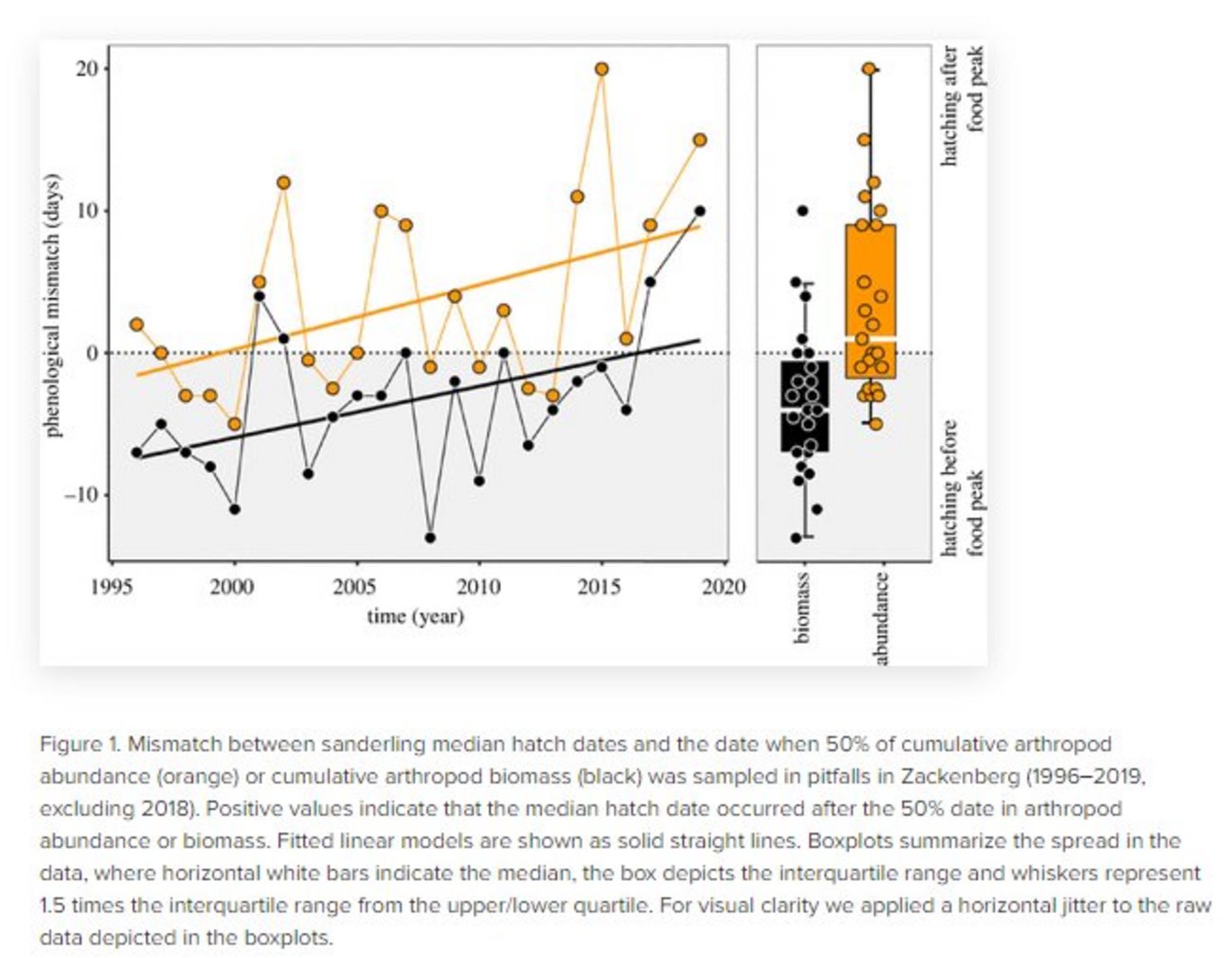Different currencies for calculating resource phenology result in opposite inferences about trophic mismatches
New publication by Versluijs TSL, Zhemchuzhnikov MK, Kutcherov D, Roslin T, Schmidt NM, van Gils JA et al.

Abstract:
Shifts in phenology are among the key responses of organisms to climate change. When rates of phenological change differ between interacting species they may result in phenological asynchrony. Studies have found conflicting patterns concerning the direction and magnitude of changes in synchrony, which have been attributed to biological factors. A hitherto overlooked additional explanation are differences in the currency used to quantify resource phenology, such as abundance and biomass. Studying an insectivorous bird (the sanderling) and its prey, we show that the median date of cumulative arthropod biomass occurred, on average, 6.9 days after the median date of cumulative arthropod abundance. In some years this difference could be as large as 21 days. For 23 years, hatch dates of sanderlings became less synchronized with the median date of arthropod abundance, but more synchronized with the median date of arthropod biomass. The currency-specific trends can be explained by our finding that mean biomass per arthropod specimen increased with date. Using a conceptual simulation, we show that estimated rates of phenological change for abundance and biomass can differ depending on temporal shifts in the size distribution of resources. We conclude that studies of trophic mismatch based on different currencies for resource phenology can be incompatible with each other.
